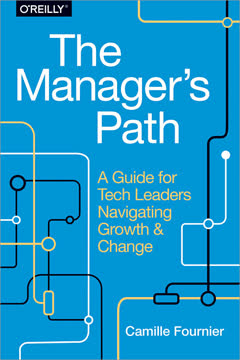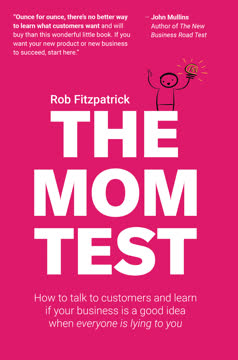重点摘要
1. 数字技术偏向特定行为和结果
数字技术偏向选择,因为一切都必须用离散的、是或否的符号语言来表达。
内在偏见。 数字技术并非中立;它带有内置的倾向,影响我们的互动和决策。这些偏见包括偏向选择、即时性和抽象性。理解这些偏见可以让我们更有意识和有效地使用数字工具。
对社会的影响。 数字技术的偏见对我们的沟通、工作和思维方式有深远的影响。例如,偏向选择可能导致决策疲劳,而偏向即时性可能削弱我们深度思考和反思的能力。通过认识到这些倾向,我们可以制定策略来抵消其负面影响,并利用其积极潜力。
2. 理解和应对数字生活的“永远在线”特性
我们没有变得更有力量和意识,反而变得焦虑和疲惫。
持续连接。 数字时代带来了一个永远连接的时代,我们被期望随时可用和响应。这种“永远在线”的心态可能导致压力、倦怠和专注于重要任务的能力下降。
重新掌控。 为了应对持续连接的负面影响,我们必须:
- 为设备使用设定界限
- 创建指定的“离线”时间
- 练习有意识地使用技术
- 优先考虑面对面的互动
- 制定深度工作和专注注意力的策略
通过掌控我们的数字习惯,我们可以利用连接的好处,同时避免其陷阱。
3. 平衡虚拟连接与现实世界互动
数字领域偏向远离本地,趋向于脱离。
虚拟与物理存在。 数字技术扩展了我们与远距离人群连接的能力,但也导致了本地面对面互动的贬值。这种转变可能导致我们与周围环境和社区的脱节感。
找到平衡。 为了保持健康的关系和强烈的归属感:
- 尽可能优先考虑面对面的互动
- 使用数字工具来增强而不是取代本地连接
- 参与社区活动和事件
- 在物理空间中练习正念和存在感
- 认识到具身体验的独特价值
通过有意识地平衡我们的虚拟和物理互动,我们可以利用数字连接的好处,同时保留本地具身体验的丰富性。
4. 认识到数字空间中复杂问题的简化
数字领域偏向于简化复杂性。
简化倾向。 数字平台往往鼓励将复杂的主题简化为二元选择或简短的片段。这可能导致极化、误解和重要讨论中的背景丧失。
拥抱复杂性。 为了抵消这种偏见:
- 寻求多样化的观点和长篇内容
- 练习批判性思维和事实核查
- 参与深思熟虑的、细致入微的在线和离线讨论
- 认识到数字表示复杂问题的局限性
- 鼓励和参与跨学科的方法来解决问题
通过积极拥抱复杂性,我们可以促进更有意义的对话,并为社会挑战制定更全面的解决方案。
5. 在网络环境中保持身份和责任感
做你自己。
数字匿名性。 互联网常常允许匿名或假名互动,这可能导致我们在线和离线自我之间的脱节。这可能导致责任感下降和更极端或有害行为的倾向。
真实的在线存在。 为了培养负责任和真实的数字存在:
- 在适当的时候使用真实姓名
- 对自己的在线行为和言论负责
- 发展与离线自我一致的在线形象
- 认识到数字通信的持久性
- 在在线互动中培养同理心和理解
通过在网上保持我们的身份和责任感,我们可以创造一个更诚实、尊重和建设性的数字环境。
6. 在尊重知识产权的同时拥抱开放性
分享,不要偷窃。
开放协作。 数字时代使前所未有的分享和协作成为可能,导致了开源软件、创作共用许可和像维基百科这样的协作知识平台的创新。
平衡开放性和所有权。 为了在这个新环境中导航:
- 理解和尊重不同类型的知识产权
- 适当地使用开源和创作共用资源
- 尽可能参与协作项目
- 正确归属和信用他人的工作
- 通过道德消费和公平补偿支持创作者
通过在尊重知识产权的同时拥抱开放性,我们可以培养一种创新和创造力的文化,使每个人受益。
7. 学会编程,否则就会被编程
如果我们不学会编程,我们就有被编程的风险。
数字素养。 在一个日益数字化的世界中,理解技术如何运作对于保持自主权和做出明智决策至关重要。编程技能正变得像读写一样基本。
通过代码赋权。 为了在数字时代茁壮成长:
- 学习基本的编程概念和语言
- 理解算法和数据结构背后的逻辑
- 探索技术的伦理影响
- 提倡在学校进行计算机科学教育
- 鼓励对技术在社会中角色的批判性思考
通过发展编程技能和数字素养,我们可以积极塑造技术景观,而不是被动的消费者。
最后更新日期:
FAQ
What's "Program or Be Programmed: Ten Commands for a Digital Age" about?
- Digital Age Challenges: The book explores the challenges and opportunities presented by the digital age, emphasizing the importance of understanding and engaging with digital technologies.
- Ten Commands: It provides ten "commands" or guidelines to help individuals navigate the digital landscape effectively and responsibly.
- Programming vs. Being Programmed: The central theme is the choice between programming digital tools or being passively programmed by them, highlighting the need for active participation in digital culture.
- Cultural and Social Impact: Rushkoff discusses the broader cultural and social implications of digital technologies, urging readers to consider their roles in shaping the future.
Why should I read "Program or Be Programmed"?
- Understanding Digital Biases: The book helps readers understand the inherent biases of digital technologies and how they influence human behavior and society.
- Empowerment through Knowledge: By learning about programming and digital literacy, readers can gain more control over their interactions with technology.
- Cultural Insight: Rushkoff provides insights into how digital technologies are reshaping culture, communication, and personal identity.
- Practical Guidance: The ten commands offer practical advice for living and working in a digital world, making it a valuable resource for anyone navigating modern technology.
What are the key takeaways of "Program or Be Programmed"?
- Be Conscious of Time: Digital technologies can disrupt our sense of time; it's important to manage how and when we engage with them.
- Value Real-World Interactions: Despite the convenience of digital communication, in-person interactions remain crucial for genuine connection.
- Embrace Complexity: Digital tools often oversimplify complex issues; it's vital to recognize and address this reduction.
- Learn to Program: Understanding programming is essential to avoid being passively controlled by technology and to actively shape digital experiences.
How does Douglas Rushkoff define "programming" in the book?
- Beyond Coding: Programming is not just about writing code; it's about understanding how digital systems work and influence us.
- Empowerment Tool: It is a means of gaining control over technology, allowing individuals to shape their digital environments.
- Cultural Literacy: Programming is seen as a form of literacy necessary for participating fully in the digital age.
- Active Participation: Rushkoff emphasizes programming as a way to actively engage with and influence the digital world, rather than being a passive consumer.
What are the "Ten Commands" in "Program or Be Programmed"?
- Time: Do not be always on; manage your digital engagement.
- Place: Live in person; prioritize real-world interactions.
- Choice: You may always choose none of the above; resist forced digital choices.
- Complexity: You are never completely right; embrace complexity and nuance.
- Scale: One size does not fit all; recognize the limits of digital scalability.
- Identity: Be yourself; maintain authenticity online.
- Social: Do not sell your friends; value genuine connections over commercial interests.
- Fact: Tell the truth; prioritize factual communication.
- Openness: Share, don’t steal; respect intellectual property and collaboration.
- Purpose: Program or be programmed; learn to code and understand digital systems.
What does Rushkoff mean by "Program or Be Programmed"?
- Choice of Agency: The phrase emphasizes the choice between actively shaping digital tools or being passively shaped by them.
- Control Over Technology: It highlights the importance of understanding and controlling the technologies we use.
- Cultural Influence: The concept underscores the role of programming in influencing culture and society.
- Empowerment Message: Rushkoff encourages readers to learn programming to gain empowerment and agency in the digital age.
How does "Program or Be Programmed" address the concept of digital identity?
- Anonymity vs. Authenticity: Rushkoff discusses the tension between anonymity and authenticity in digital interactions.
- Accountability: He emphasizes the importance of being accountable for one's words and actions online.
- Identity as Liability: The book explores how digital identity can be a liability, especially when anonymity leads to depersonalized behavior.
- Encouragement to Be Real: Rushkoff encourages readers to maintain their real identities online to foster genuine connections and accountability.
What are the implications of digital technology's bias toward choice, according to Rushkoff?
- Forced Decisions: Digital systems often force users to make choices, even when unnecessary, due to their binary nature.
- Illusion of Freedom: The abundance of choices can create an illusion of freedom while actually limiting true autonomy.
- Consumer Manipulation: Marketers exploit this bias to influence consumer behavior and preferences.
- Resisting Categorization: Rushkoff advises readers to resist unnecessary categorization and embrace the option of choosing none of the above.
How does Rushkoff suggest we handle the complexity of digital information?
- Recognize Oversimplification: Digital tools often oversimplify complex issues, leading to polarized views and misunderstandings.
- Value Context: It's important to seek context and understand the broader picture rather than relying solely on digital summaries.
- Embrace Nuance: Rushkoff encourages embracing complexity and nuance in digital interactions and decision-making.
- Avoid Binary Thinking: He warns against the reductionist nature of digital systems that promote binary thinking and choices.
What does Rushkoff say about the social nature of digital media?
- Inherent Social Bias: Digital media is inherently social, designed to connect people rather than isolate them.
- Monetization Risks: Attempts to monetize social interactions can compromise the integrity of digital networks.
- Value Genuine Connections: Rushkoff emphasizes the importance of valuing genuine human connections over commercial interests.
- Evolutionary Imperative: He suggests that the drive for social connection is an evolutionary imperative, pushing us toward greater collaboration.
What are some of the best quotes from "Program or Be Programmed" and what do they mean?
- "Program, or be programmed." This encapsulates the book's central message about the importance of understanding and engaging with digital technologies.
- "The content is not the message, the contact is." Rushkoff highlights the value of human connection over the content itself in digital interactions.
- "Tell the truth." This command underscores the digital age's bias toward factual communication and the importance of honesty.
- "Be yourself." Rushkoff encourages authenticity and accountability in digital spaces, warning against the depersonalization of online interactions.
How does "Program or Be Programmed" address the issue of digital openness and sharing?
- Bias Toward Sharing: Digital networks are inherently biased toward openness and sharing, reflecting their collaborative origins.
- Distinguishing Sharing from Stealing: Rushkoff emphasizes the importance of understanding the difference between sharing and exploiting others' work.
- Cultural Shift: The book discusses the cultural shift toward openness and the challenges it presents in terms of intellectual property.
- Promoting Ethical Sharing: Rushkoff advocates for ethical sharing practices that respect creators' rights while embracing digital collaboration.
评论
《编程或被编程》评价不一。一些人称赞其对数字技术对社会影响的深刻分析以及在数字时代中导航的实用建议。另一些人则认为它重复、显而易见或缺乏实质内容。许多人欣赏拉什科夫对技术偏见的审视以及他对数字素养(包括编程技能)的呼吁。批评者认为一些类比存在缺陷,解决方案也不够充分。总体而言,读者重视该书对我们与技术关系的发人深省的观点,即使他们并不完全同意拉什科夫的所有论点。
Similar Books
















